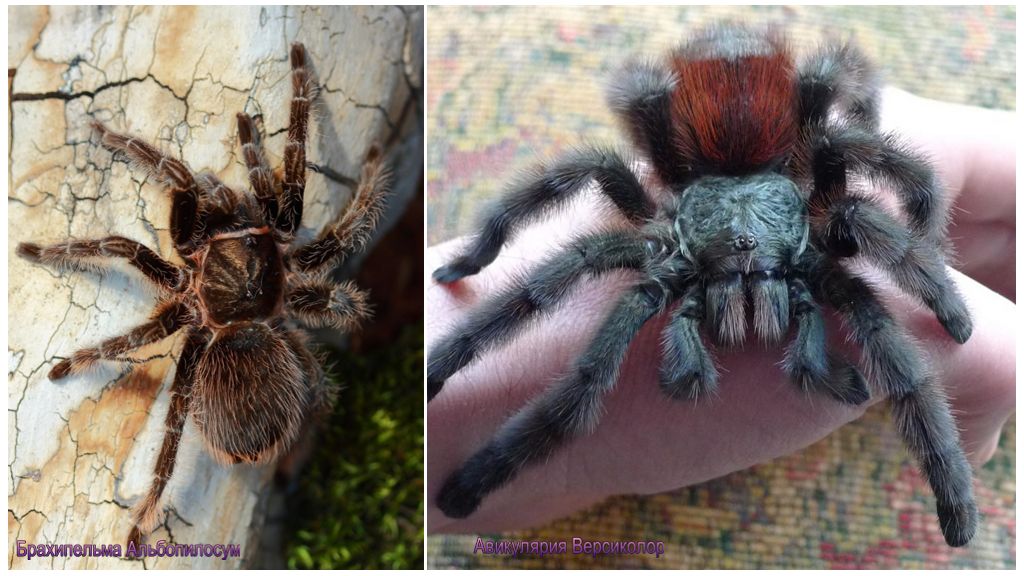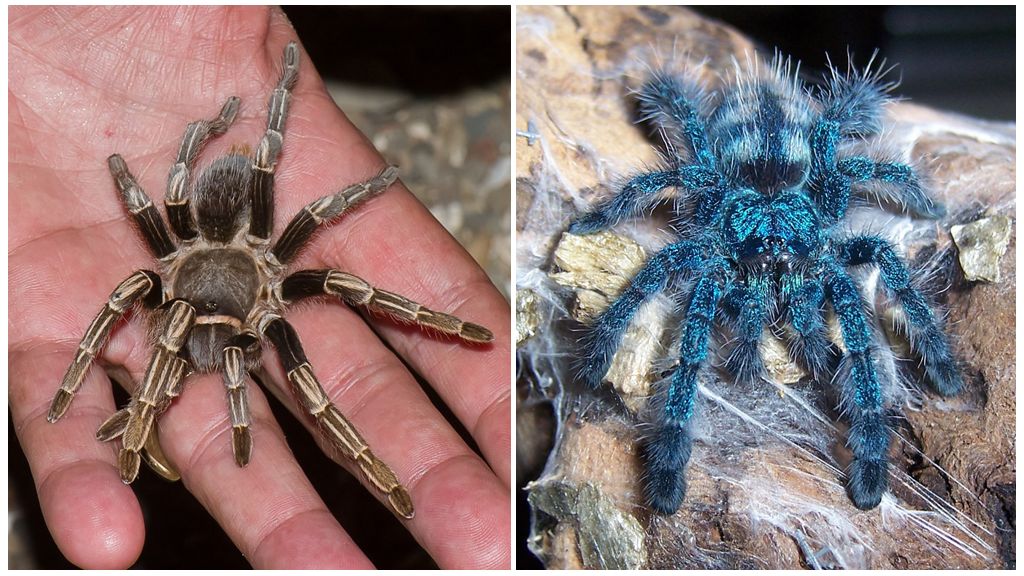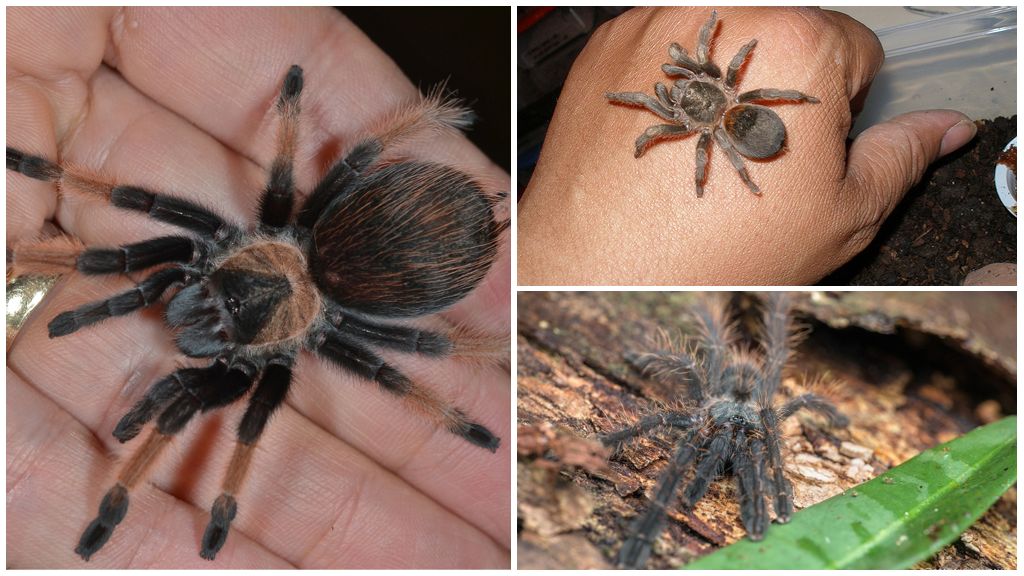Spider tarantula at home
Content
- Spider tarantula
- Spider tarantula
- Spider tarantula
The spider tarantula at home lives up to 20 years. This is one of the most unpretentious animals - mates, multiplies, grows, eats 1-2 times a week. The tarantula family is divided into 13 subfamilies, includes many different species. Each copy is distinguished by its large size, unique color, and calm temperament.
Homebird tarantula for beginners and professionals
In their natural habitat spiders live in the tropics. They love heat, humidity, constant temperature. Different species live in the soil - they build deep labyrinths, on trees - by building huge trapping nets. The habitat of one species may change as they grow older. Often the young live in the soil, after reaching puberty, they move to plants and travel around the area.
Important!
Domestic tarantulas need to create conditions as close as possible to the natural environment. Before buying an exotic pet you need to study his usual way of life in order to create the most comfortable environment. Otherwise, the animal will die from the stress in captivity.
All tarantulas distinguishes a calm temperament, non-aggressive behavior. However, we must remember that every spider is poisonous to varying degrees. For beginners, experts recommend starting:
- Brachypelma Albopilosum (Brachypelma albopylosum). The most calm, ground copy. Pinkish brown. Body size with paws 16 cm. The bite is painful, but not life threatening. Females live up to 20 years, males - about 3 years.Does not require special care, feeds on small insects. Web weaves a little.
- Avicularia Versicolor (Avicularia Versicolor). Woody view for beginners. The color of an adult individual is bright with a predominance of blue and blue. The body size reaches 5 cm, the paw span is 16 cm. It weaves a large number of cobwebs, makes a hole out of it for itself, hangs from the terrarium ceiling. He sits in his house during the daytime, and when it gets dark, he begins to active. Fast, agile, almost elusive. Females live up to 8 years, males about 2 years. Poison is not dangerous to humans. The hair does not contain toxic substances, so you can easily take it in hand.
For professionals, Lasiodora Parahybana (Lasiodorus Parahibana), Grammostola, Acanthoscurria is recommended. The decoration of the collection is often a Goliath bird tiger up to 28 cm in size.
How to feed a spider tarantula at home
The name of the family leads many astray. Initially, you might think that the spider eats birds, it is necessary to feed it feathered. This is not entirely true; the name appeared thanks to an entomologist from Germany, who, while traveling through the tropical forests of South America, saw an exotic spider that ate a hummingbird. Information appeared in the press, since the animal is so called.
The main diet - insects.Eating tarantulas:
- crickets;
- grasshoppers;
- cockroaches;
- flies;
- moths;
- moth caterpillars.
Large exotic animals periodically give raw chicken meat, fish, throw small rodents. Feeding the growing young generation is carried out 4 times a week, adults - 2 times.
Care and maintenance
At home, looking after spiders is easy enough. They do not require increased attention, do not violate the silence, do not litter much. For the maintenance of the spider tarantula buy an aquarium, a terrarium. Inside create conditions as close as possible to the natural environment. For soil species, the substrate is made of bark, the earth is at least 5 cm thick. For terrestrial specimens, we always need a snag, where they will weave a web, build shelter for themselves.
On a note!
It is not required to buy a special lamp for illumination, since arthropods like twilight. Place the terrarium should be away from direct sunlight, in the darkest corner of the room. In winter, additional heating may be required, since a constant temperature of at least 25 degrees Celsius is required.
Leftover food and skin after a molt are regularly removed from the terrarium; young spiders and males are removed after mating to prevent cannibalism.It is necessary to maintain moisture, to prevent drying of the skin. Otherwise, the cover of the abdomen frowns, cracks, the animal is sick.
Breeding
How to determine the sex of the spider tarantula, experts say. About a month later molts the younger generation. Need to pull the skin. Carefully examine it. In females, there is a dimple on the back side; in males, there are two hillocks. In matured individuals, the sex is determined by appearance. Males are always taller, slimmer, longer legs. But the body itself is much smaller than the females.
After mating, the eggs inside the female develop about 2 months. During this time, she weaves a large cocoon. Lays up to 500 eggs at a time. About 50 are left alive. In order to allow the cubs to fully develop, the cocoon is moved to a separate terrarium, creating the necessary temperature conditions.
After birth, the young do not eat anything for about a month. At this time they can be kept together. After the first molt seated one by one. In all their lives, tarantulas females molt 12 times. In males, this process stops after puberty - after 5 years of life.
Interesting!
After each shedding spider matures, increasing in size. Shortly before the molt, it ceases to eat, turns over, and tries to pull off the old skin. After this process, the color may change, the poison pile is updated.
Is the bird spider dangerous for humans?
Before you start a pet, you need to know whether it is poisonous or not. Exotic creatures that are sold as a pet do not pose a mortal danger to humans, but they can bite.
The animal rushes to attack if it feels threatened for its own life. Previously, he begins to hiss, takes a threatening pose - rises to the hind limbs. The tarantula makes a spider a tick bite with chelicerae, which end in fangs up to 2 cm long. Injects poison.
At the place where the spider has bitten, redness, swelling, swelling, pain appear. The skin is restored within a week. Take special care is necessary for people with a high propensity to allergies, weak immunity. After the attack of the tarantula, the general state of health worsens, weakness, nausea, diarrhea, dizziness, and headache appear.
Bird-eating is not a subject to training, therefore a person needs to adapt to it, study temper. It should not be taken in hands without gloves, since contact with a poisonous nap threatens local irritation.
Important!
Some people have phobias associated with spiders - arachnophobia. If a spider accidentally crawls away, a person with such a diagnosis in an unexpected collision can die of fear. Be sure to ensure that the pet did not get out of the terrarium, did not crawl to travel around the apartments of neighbors.
How much is a spider tarantula
The cost of an exotic animal depends on the species. The price of a rare instance is calculated in dollars. Order a tarantula spider via the Internet on the website. Often bought from collectors on the ad. Bird-eating spiders are sold at pet stores. The cost of a pet from 100 rubles. up to 10,000 rubles The price of the spider tarantula also depends on the sex - females are always more expensive.
When choosing a pet you need to consider age. Too large individuals it is better not to buy, because they can be in old age. You need to inspect the shell on the abdomen, if it is damaged, wrinkled, there are cracks, you should not buybecause the animal may be sick. Do not buy a tarantula before molting and immediately after it. The spider must be active, responsive to touch.











